A little inside the NFL, if you’ll indulge: Automakers typically send out well-optioned versions of the cars auto scribes test. There’s a simple reason for that. Carmarkers want us to write about all the bells and whistles so you, the car buyer, to fall in love with the car and liberally check those pricy option boxes. They want you to go for the upmarket trim, the more powerful engine, fancy wheels.
But the reality is that most buyers look at their needs, check them against their desires and cross reference their budget as they decide between a nicely equipped LT1, like the Malibu tested here, an LTZ with the hot V-6 and leather or something inbetween.
Malibus start at $22,695, including destination for the base LS. The LT1 starts at $23,545. With just one option – $250 for a USB port for the stereo and a rear 110-volt outlet – the as-tested price is $23,795.
But even without many options, the Malibu has some unexpected features. How about cool green ambient lighting illuminating the center console. Gas struts to hold up the hood and trunk lid. Power lumbar support and height adjustment for the driver’s seat. Seventeen-inch aluminum wheels.
So what do you give up? While the interior is mostly well-finished, most of the plastics are stiff. The driver has to manually adjust the seat for rake and reach. Instead of a leather-wrapped steering wheel, the LT1 comes with molded plastic that is rough to the touch. Unfortunately, the test car’s wheel had some poor partlines.
While it may be lacking in frills, the design is still rather striking.
Chevrolet introduced the new Malibu in 2008, replacing a car that looked more like a refrigerator with wheels than a stylish mid-size sedan. What a difference a little effort in the styling studio can make.
Those efforts continued into the interior. Even though the materials aren’t quite as nice as more expensive versions of the Malibu, the basic design is still the same. The Malibu has a striking two-tone twin-cockpit design, no matter what trim level you choose. A tasteful faux wood makes an narrow arc from the doors to the center console. The two-tone theme continues on the seats.
It all works well together. All of the controls fall easily to hand and work with a smooth precision. In fact, those controls are a microcosm of everything that has changed at GM in the last 3 years. In the not-to-distant past, minor controls like these always felt cheap in GM cars. Finally, GM is seeing that turn signals and wiper stalks matter.
The major controls work well, too. The six-speed transmission – standard in all versions of the Malibu for the first time in 2011 – always seems to find the right gear. And, if you want to shift for yourself, pull the lever back to M and use the buttons on the lever to choose.
One aspect that buyers in this class will probably really appreciate is the car’s smoothness. Everything about the car, but particularly the engine, is surprisingly smooth.
While the V-6 version of the Malibu suffers from a bit of torque steer, the less-powerful base four cylinder doesn’t have enough power for that to be a problem. Speaking of power, it does have enough for most situations, although accelerating to freeway speed shows that its limitations.
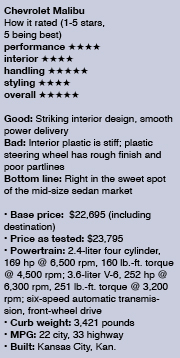 That four cylinder is GM’s corporate 2.4-liter, making 169 horsepower and 160 lb.-ft. of torque in the Malibu. Mileage is rated at 22 city and 33 highway. We saw 27.5 in mostly freeway driving.
That four cylinder is GM’s corporate 2.4-liter, making 169 horsepower and 160 lb.-ft. of torque in the Malibu. Mileage is rated at 22 city and 33 highway. We saw 27.5 in mostly freeway driving.
The V-6, optional in the LT and top-level LTZ, is rated at 252 horsepower. V-6 models carry fuel mileage ratings of 17/26.
The ride is smooth, the car handles nicely and the steering has decent feedback for a everyday sedan.
While the frou frou of more expensive models represent the highest profit for automakers, Malibus like this one represent the sweet spot for many auto buyers. It may not have all of the coolest available features, but most buyers are willing to do without if it keeps the price down.

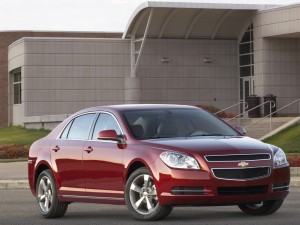
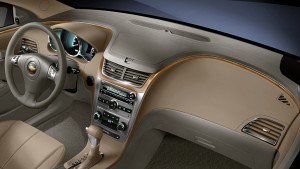
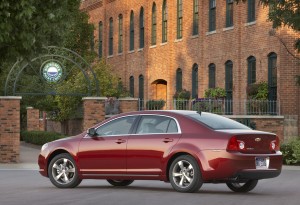
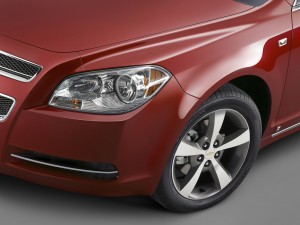
Doesn’t seem too different from the current model. Did they do anything to improve on the tinny sound of the doors closing?